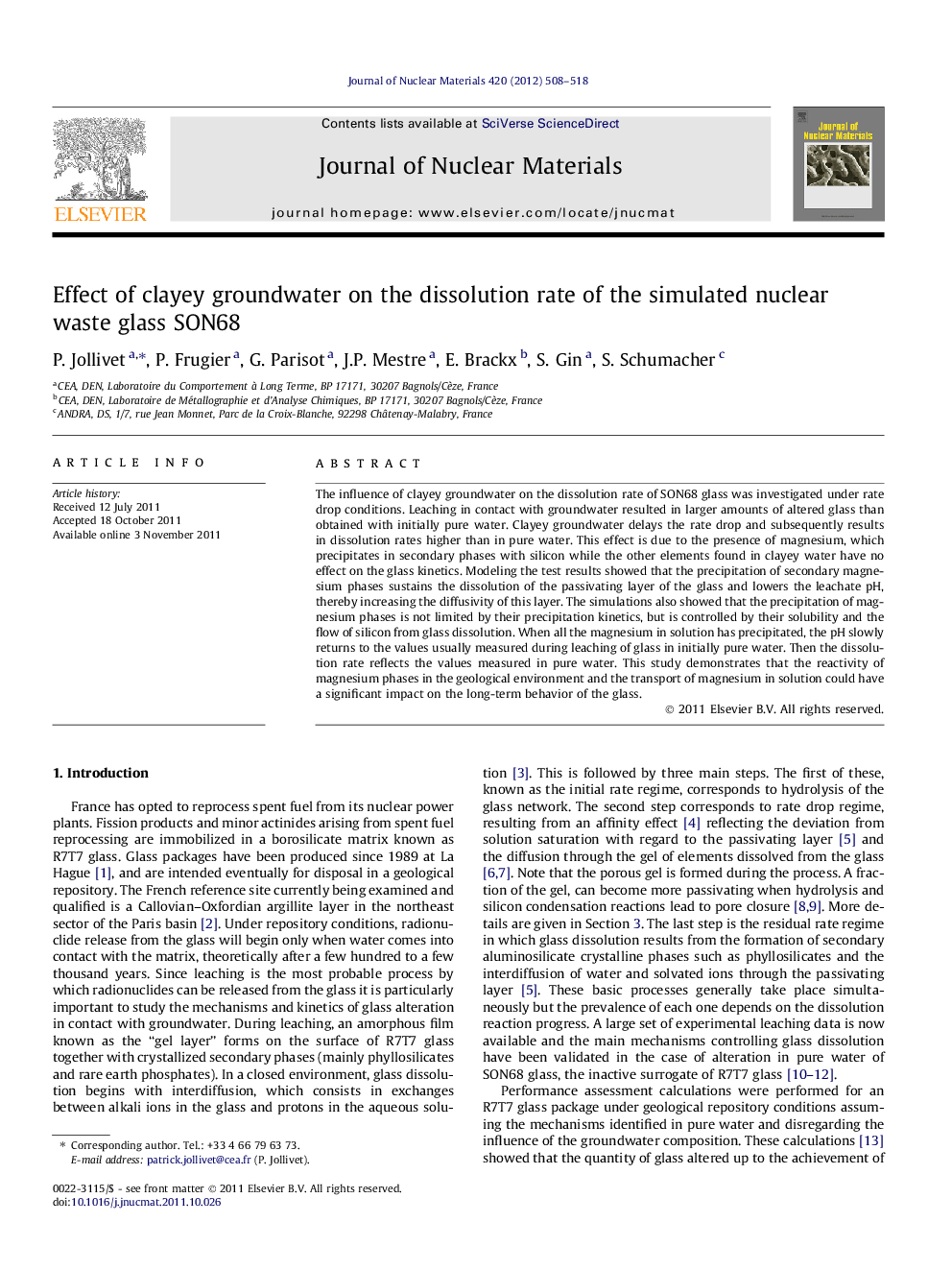| Article ID | Journal | Published Year | Pages | File Type |
|---|---|---|---|---|
| 1566499 | Journal of Nuclear Materials | 2012 | 11 Pages |
The influence of clayey groundwater on the dissolution rate of SON68 glass was investigated under rate drop conditions. Leaching in contact with groundwater resulted in larger amounts of altered glass than obtained with initially pure water. Clayey groundwater delays the rate drop and subsequently results in dissolution rates higher than in pure water. This effect is due to the presence of magnesium, which precipitates in secondary phases with silicon while the other elements found in clayey water have no effect on the glass kinetics. Modeling the test results showed that the precipitation of secondary magnesium phases sustains the dissolution of the passivating layer of the glass and lowers the leachate pH, thereby increasing the diffusivity of this layer. The simulations also showed that the precipitation of magnesium phases is not limited by their precipitation kinetics, but is controlled by their solubility and the flow of silicon from glass dissolution. When all the magnesium in solution has precipitated, the pH slowly returns to the values usually measured during leaching of glass in initially pure water. Then the dissolution rate reflects the values measured in pure water. This study demonstrates that the reactivity of magnesium phases in the geological environment and the transport of magnesium in solution could have a significant impact on the long-term behavior of the glass.
► Leaching of SON68 glass in presence of clayey groundwater increases glass dissolution rate. ► This effect is due to the presence of magnesium in clayey groundwater by precipitation of secondary magnesium silicates. ► When all magnesium has been consumed, glass dissolution rate drops to the value measured in initially pure water.
